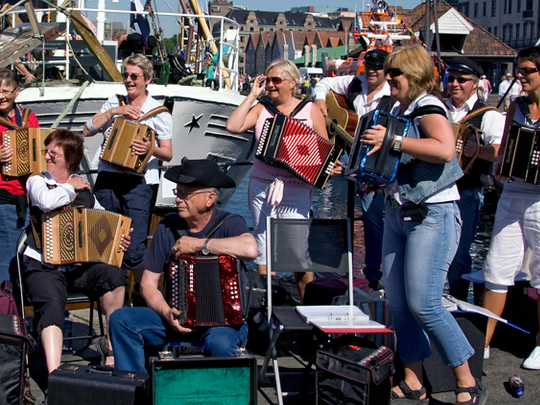
Quantifying prosperity or happiness is a complex and maybe an impossible task, and a definitive solution has eluded philosophers, statisticians and the common man for centuries. At the risk of sounding materialistic, for most, happiness is inexorably linked to money, as it allows one to purchase needs and fulfil wants such as food, shelter, comfort and leisure. On a macro level, other factors need to be considered, such as health care, education security, work-life balance, and freedom of expression and belief.
In an attempt to rank the happiest or most prosperous countries in the world, the Legatum Institute has devised the Legatum Prosperity Index, which incorporates 89 variables sorted into nine categories: economy, democratic institutions, entrepreneurship, governance, education, health, safety, personal freedom and social capital.
High ranking
In the 2010 Prosperity Index, Norway was crowned the most prosperous country in the world; not entirely unexpected, given it was ranked third in Gallup's latest Global Happiness Survey and first in the world in the UNDP Human Development Index from 2001 to 2006 and 2009-2010 — all despite being bitterly cold, dark for half the year, and one of the world's most heavily taxed countries — with a top rate of 47 per cent. The obvious question is this: how, in a world where presidential approval ratings soar with the promise of tax cuts and where corporations and individuals rush to seek shelter in tax havens such as the UAE, can Norway's residents be happy while surrendering up to half their earnings to Uncle Sam — or Uncle Sven?
The answer lies in the socialist thread that runs through the fabric of Norwegian society, binding it with the kind of egalitarianism that promotes universal welfare. Like residents of most other Scandinavian nations, Norwegians do not perceive taxes as a burden, but rather a lifelong investment in goods and services, the value of which greatly outweighs cost — not just for themselves, but also for their fellow citizens. At the Arctic Securities conference in August 2010, Norway's Finance Minister, Sibjorn Johnsen, said that the sustainability of economic growth is "about budget sharing" and "requires a fair distribution of the income."
The government welfare package, available to all Norwegians, provides comfort and security for three crucial concerns: education, health care and social security. The funding burden of this generous, and thus expensive, plan is shouldered mostly by Norway's super-rich by way of the country's progressive tax system. Thus lower-income taxpayers contribute less to the funding of the welfare pool (in gross terms) but avail the same benefits. Due to the egalitarianism and fellowship fostered by socialist ideals, it is generally not a point of resentment or animosity among Norway's wealthy.
Spoilt for choice
A closer look at the government-sponsored benefits and perks reveals that Norwegians do have really a great deal. Education is free, from nursery school to graduate school, and the government even pays for Norwegians to attend foreign universities. Norway's schooling system is entirely public, i.e. there are no private schools, and is generally considered to be of high calibre.
Health care is free and of excellent quality. According to a 2008 survey, 85 per cent of Norwegians were satisfied with their health. At a per capita expenditure of $5,500 (about Dh20,200), the world's second highest, it's a relief that the government picks up the tab.
Social security in Norway is extremely generous — from the age of 67, workers get government pensions of up to 66 per cent of their working income. Critics are sceptical about the sustainability of the programme in the future, given the long life expectancies in the country, but Norway's knack for producing successful entrepreneurs continuously generates opportunities and wealth, a significant portion of which flows back into the welfare funding pool through taxation.
Entrepreneurial streak
The 2010 Legatum Prosperity Index ranked Norway as sixth in the Entrepreneurship & Opportunity category. According to a report by the Global Entrepreneurship Monitor, a not-for-profit academic research consortium, Norway has more entrepreneurs per capita than the United States. Taxes also allow Norwegians to make use of the country's astonishing policy on maternal and paternal leave: new mothers and fathers can take up to 46 weeks and ten weeks of maternity and paternity leave respectively, at full pay, all at the expense of the government.
A healthy work-life balance is also observed. According to the State Statistics Bureau, Norwegians worked an average of just 30 hours per week in 2010, giving them ample time to enjoy with family and friends. According to Anders Pettersen, a Norwegian native, "we don't live to work; we work to live."
Norwegians are a laid-back and friendly people. They look after one another, and in return the state looks after them. There is an overarching sense of social responsibility that emphasises the benefit of the whole rather that of the individual, manifested in the country's low income inequality and non-existent poverty.
NORWAY BEST FOR MUMS
Norway is the best place in the world to be a mother, reveals Mothers' Index, an annual report compiled for the past 12 years by the non-profit group Save the Children. The organisation's researchers documented conditions for mothers and children in 164 countries: 43 developed nations and 121 in the developing world.
The Scandinavian nation's excellent health facilities allowed it to claim top spot. Skilled health personnel are present at virtually every birth, reducing the likelihood of mother or baby dying. The top ten nations in order are Norway, Australia, Iceland, Sweden, Denmark, New Zealand, Finland, Belgium, the Netherlands and France. Britain ranked 13th among developed countries, while the US was 31st. Afghanistan, with the highest lifetime risk of maternal mortality, lies at the bottom of the table.
— AFP


